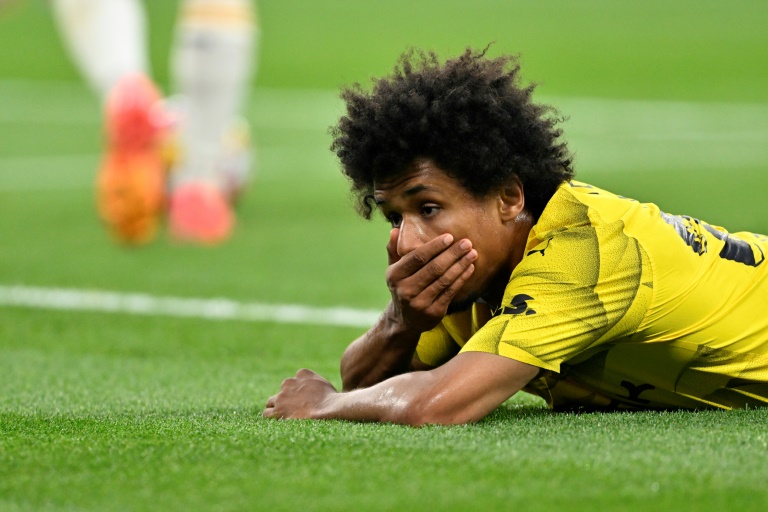A quarter may only be worth 25 cents at a store, but if it’s a rare mint then it could be worth way more to a collector. Coins produced in small batches, experimental metals and made with mistakes may all fetch a pretty penny. Investing in coins can be a fun and rewarding pastime for enthusiasts. Canada has produced its fair share of valuable coins that collectors may want to keep an eye out for. Keep reading to see what Canadian coins worth money have been produced by the Royal Canadian Mint over the years.
Most Valuable Canadian Coins
Before taking your Canadian coins to a store, examine them carefully. They may be worth hundreds or even thousands of dollars. Here are some of the top Canadian coins worth money.
1906 Small Crown Canadian Quarter
In 1906, the Royal Canadian Mint changed its design to be featured on the reverse side of the coin. However, a small batch of the 1906 quarter was struck with the wrong design, which featured a smaller crown than intended at the top of the coin. The mint quickly caught the mistake, so only about 100 coins were in circulation. This quarter is considered one of the rarest Canadian coins, with high-grade coins having sold for more than $50,000 at auctions. Low-grade versions of the coin are still worth thousands.
The 1936 Dot George V Canadian Quarter
In late 1936, Edward VIII announced his abdication. King George VI took the throne, but the mint needed to produce coins while they were still waiting for George VI’s effigy. In the meantime, they produced coins, including a quarter with George V’s effigy. These coins were minted in 1937, which is what the dot signifies. Only a few were produced, and their cultural significance makes them popular among collectors. Low-grade examples of these coins may only be worth a few hundred dollars, but higher-grade versions may be worth thousands.
The 1911 Godless Canadian Quarter
In previous mints, Canadian quarters had the inscription “DEI GRATIA REX IMPERATOR.” But on the 1911 quarter, the inscription was changed to “REX ET IND IMP.” This inscription leaves out “Dei Gratia” which means “By the grace of God.” Now referred to as the Godless quarter, this coin caused an outrage and scandal that was corrected in the 1912 mint.
The 1947 Dot Canadian Quarter
Before 1948, Canadian coins had the inscription “Et Ind: Imp,” which stood for “Emperor of India.” So when India gained independence in 1948, Canada had to create dies without the inscription. In the meantime, to fulfill a demand for quarters, the mint released a few copies of the 1947 quarter with a small maple leaf next to the date to show that it was minted in 1948. The maple leaf part of the die deteriorated over time until it became just a dot next to the year. Low-grade versions of this coin aren’t worth much and may sell for less than $100. A high-grade quarter with this strike can sell for a couple of thousand dollars.
The 2000 P Caribou Quarter
Sometimes, mints experiment with different metals, and these coins can be valuable. In 2000, the Royal Canadian Mint struck a few quarters on steel alloy coins with nickel plating. Coins struck on this metal include a very small P on the obverse or head side of the coin. The reverse side shows the Caribou design, which is standard in the 2000 quarter. These coins are rare and can be worth up to $10,000.
The 1992 Rotated Die Error Quarter
The Royal Canadian Mint released new quarters every month featuring different provinces to mark Canada’s 125th birthday in 1992. A minting error occurred while producing some of the coins. Typically, the orientation of the obverse and reverse side of a coin matches up. But some of these commemorative quarters were struck with a reverse die, so the obverse side picture is rotated on a 90- or 180-degree angle. These coins are not the most valuable Canadian coins but may be worth a few hundred dollars.
The 1948 Canadian Silver Dollar
Canada released a series of silver dollars each year between 1935 and 1967, but the production of the 1948 coin was slightly different. Following the end of World War II and India gaining its independence, the Royal Canadian Mint had to remove the “Et Imp: Ind” inscription. These changes required creating new dies, so coins only started being produced later in the year. Because fewer of the 1948 coins were in circulation, they became more valuable and could sell for over $1,000 in high-grade condition.
1921 George V Half Dollar
As a result of the 1920 recession, the Royal Canadian Mint created higher-tender coins. This led to the creation of the 1921 George V Half Dollar. The mint struck over 200,000 of these coins, but few of them made their way into circulation. The Royal Canadian Mint held onto most and ended up smelting the metal and reusing it to create the 1929 half dollars. It’s estimated that less than 100 of these coins still exist, and for that reason are worth up to tens of thousands of dollars.
1889 Queen Victoria Quarter
Of all the quarters struck with Queen Victoria’s effigy, the 1889 had the lowest mintage, making them rare and popular among collectors. Low-grade versions of these coins might only be worth a couple of hundred dollars. However, if you find a mid-grade quarter, it may be worth over $1,000. High-grade versions of these old coins are extremely rare but could be worth several thousand dollars.
1921 King George V 5 Cents
In 1921, Canadian legislation called for a change in the size and metal used for the 5-cent piece. It wanted to replace the smaller, silver coin with a larger, nickel coin. Once this legislation passed, the Royal Canadian Mint halted its production of the smaller, silver 1921 5-cent coins and smelted most of them. Around 400 versions of these coins are estimated to have made their way into circulation and are now worth a couple of thousand dollars, even if they’re lower grade.
History of Canadian Coins
Canada was granted the right to self-govern in 1867, but its coins were still being minted in England until the Ottawa office of the British Royal Mint opened in 1908. This office became the Royal Canadian Mint in 1931 when it was officially placed within Canada’s governance.
The obverse side of Canadian coins is struck with the effigy of the British monarch at the time. Political turmoil has caused certain effigies to be used longer than normal, as is the case with the 1936 Dot George V quarter. Other geo-political events, such as India gaining independence, have caused rare mints as Canada had to remove the “Et Imp: Ind.”
Other events that have led to rare minting include errors, such as the reverse die and smaller crown. New legislation or experimenting with different metals have also led to small, rarer batches of coins being produced.
Factors That Affect Coin Value
When determining a coin’s value, a few considerations must be kept in mind.
Coin Condition and Rarity
First is the condition of the coin and its rarity. The better condition a coin is in, the more valuable it is. Coins in high-grade and mint condition may go for thousands of dollars, while low- and mid-grade coins may only be worth a few hundred. You’ll also want to consider how rare the coin is. Research how many were minted and are still in circulation.
These two factors also go hand-in-hand. High-grade versions of some coins are extremely rare, while low-grade versions of them may be fairly common. Consider the amount in circulation and the condition to determine value.
Precious Metal Content
You’ll also want to consider the metal content of the specific strike. Depending on the year, some coins may have been struck on higher quality metal, such as the 1910 Silver Dollar struck on .925 fine silver. Often, coins made from more valuable metal are worth more to collectors.
Demand and Popularity
One of the biggest factors determining value is demand. Some coins are only valuable because they have become popular among collectors. If collectors are interested in a coin, that coin becomes in demand, which means they’ll be willing to spend more on it. And if there’s demand and a scarce supply of the coins, the value rises higher.
Identifying Valuable Coins
Many of the most valuable coins in high-grade condition are held by collectors, but there are still some in circulation. It may be worthwhile to check the change you get in everyday interactions, just in case a rare coin makes its way into your wallet. To identify valuable coins, you’ll first want to research rare coins so you know what sort of mint errors and signifiers to look for.
When examining the coin, consider the quality. Is it clean with the design in pristine condition? This may be an indicator that it’s a higher grade. You’ll also want to look for obvious errors or obscurities, such as a rotated picture or dot after the year. You should also use online resources to determine whether your coin has low mintage or is in high demand. And if you suspect your coin might be valuable, always get it appraised by a professional before selling.
Where to Find Valuable Canadian Coins
It’s unlikely, but not impossible, that you’ll find rare coins in circulation. If you’re seeking out rare coins, you may want to visit a local coin shop, an online coin store or an auction. There are also many coin collectors and numismatic events and conferences where you can learn more about rare coins, network with other collectors and potentially find coins to add to your collection.
You may also be able to find unexpected treasures in places like flea markets, garage sales, estate auctions and antique shops. Once you’re confident in knowing what to look for, check out some of these places to see whether you can spot anything of value.
Top Dollar Canadian Coins
Some coins aren’t always worth face value. Rare mints may be worth up to thousands of dollars. If you’re interested in collecting high-value Canadian coins, research some of the popular collector’s coins and become familiar with important mint errors, coins associated with historical events and different metals. Attend collector’s events and network with other local collectors to learn more about rare coins and identify potential buyers and sellers. And make sure you always get a professional opinion before buying or selling a coin.
Frequently Asked Questions
A
Some Canadian pennies that have low mintage or strike errors may be worth hundreds or thousands of dollars.
A
Some Canadian quarters were money including the dot quarters from 1936 and 1947 and the 1992 Rotated Die quarters.
A
Canadian quarters from several years are worth money if they were struck with an error, on an experimental alloy or have historical significance.







